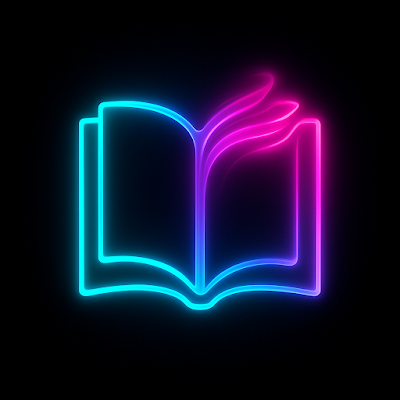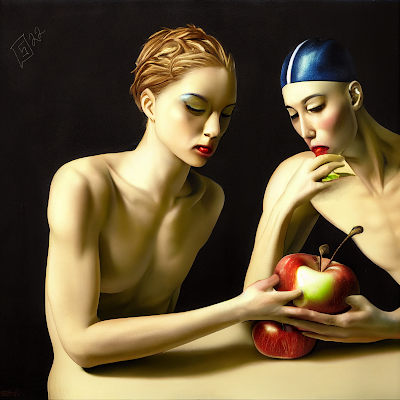PAGES
buttons
Jul 8, 2025
Today's Short Reel For YouTube Fans
Listen to Our Audiobooks Here
📘 The Book of Immersion : Volume 1 – Kindle Edition
POS Buttons, find out all about the enigma herself here at TTC HQ

POS Imaging, A new logo for our operating system at Book of Immersion
📘 The Book of Immersion : Volume 1 – Kindle Edition
The Homotechs at Tale Teller Club Publishing are Core to the Making of the Book of Immersion Series
🎶 Meet the Homotechs – Music Division

🎸 Flex
Guitars & Gravel Vocals

📢 Vapor Punk
Narrator & Spoken Word Loops

🎨 iServalan
Composer & Visual Architect

🥁 Beats Ministry
Drums, Bass & Glitch Drive

🎹 MoMo
Synths, Bass & Backing Vocals

🛸 Space Flies
Operatics, Toppers, Evoc Vocals
Explore our world of immersive sound at www.iservalan.com
Homoteching at the Tale Teller Club
homotech /ˈhəʊ.mə.tek/ noun
1. a human-machine fusion in the creative arts, blending analogue and digital methods.
2. a new form of multimedia expression born from AI collaboration and human intuition.
homoteching /ˈhəʊ.mə.techɪŋ/ verb
1. the act of creating art through a hybrid process involving artificial intelligence, hand-drawing, sound engineering, and human emotional intent.
2. making something machine-assisted but unmistakably human.
Discover Tale Teller Club Publishing's revolutionary approach to animation, where AI-generated visuals meet hand-drawn art in a process called 'homoteching.' Explore how characters like iServalan and Vapor Punk fuse tech and creativity in The Book of Immersion.Welcome to Tale Teller Club Publishing – Home of the Homotechs
At Tale Teller Club Publishing, the line between machine and maker is not just blurred—it’s beautifully reimagined. The studio is pioneering a bold new frontier in multimedia storytelling by merging AI-generated visuals with hand-drawn illustration, music production, and immersive digital editing. The result? A unique process known as homoteching.
The term was coined by artist and composer iServalan, who believes that AI, far from stifling creativity, is giving rise to a new art form. “AI won’t replace artists,” she explains. “It expands what we can be. It creates an entire new class of creative: the homotech.”
The Book of Immersion – A Creative Revolution
This philosophy took visual shape in The Book of Immersion, a ground-breaking sci-fi book series and interactive animation project. Conceived during lockdown, it has grown into a vibrant cinematic universe where music, narrative, animation and philosophy converge.
The central characters—iServalan, Flex, Vapor Punk, Beats Ministry, MoMo and the Space Flies—are each designed using a mixture of AI tools and traditional methods. They are not just fictional personas, but avatars of the homotech movement: artists who live at the edge of technology, embracing it to heighten emotional storytelling, not erase it.
Animation, AI, and the Human Touch
The Book of Immersion’s upcoming films use a fusion of software including Midjourney, Sora, and Corel, alongside hand-drawn frames and animated sequences. The results are experimental and striking—part-dreamscape, part-digital folklore, always recognisably human.
This is not art generated by AI. This is art created through AI, with the soul of the artist guiding every glitch, every beat, every surreal landscape.
The Rise of the Homotechs
The Tale Teller Club’s Homotechs are no longer just fictional characters—they’ve become icons of a new creative wave. From animated shorts and interactive chapters to full-length features in development, this is a studio using new media to full effect, creating bold, unpredictable, immersive art experiences that honour both the algorithm and the artist.
Watch, Read, Listen
- 🎬 The Book of Immersion film episodes launching soon
- 📖 Read or listen to the interactive books online
- 🎵 Original scores by Tale Teller Club available on streaming platforms
- 📺 Behind-the-scenes, character design and AI art process on YouTube
Join the movement.
Be a Homotech.
#homotech #taletellerclub #AIart #immersiveanimation #iServalan #BookOfImmersion
🌐 Meet the Homotechs
🌐 Meet the Homotechs
- 🎨 iServalan – Art & Identity
- 🛠️ Flex – Code, Strength & Story
- 🌀 Vapour Punk – Narrator of Strata
- 🎧 Beats Ministry – Music & Pulse
- 🧠 MoMo – Mind Tech & Memory
- 🚀 Space Flies – The Code Carriers
A Tale Teller Club AI Fusion Project
A Tale Teller Club AI Fusion Project
Jul 6, 2025
Best 10 Sci-Fi Books now on the internet and beyond 2025 and why they are so great
Best 10 Sci-Fi Books now on the internet and beyond 2025 and why they are so great
“Featuring original lyrics by Tale Teller Club and artwork by iServalan, The Book of Immersion: Volume 1 offers a multisensory reading experience that is as poetic as it is provocative. It is not merely a story—it is a threshold to another state of being.” (books.google.com)
If you’ve ever wished a novel could sing to you, paint for you, and then whisper its last line through a vocoder, Sarnia de la Mare’s The Book of Immersion is already living in your head. It’s literature spliced with sound art and graphic storytelling—a proof-of-concept for sci-fi as total sensory plunge, and a perfect gateway to ten other speculative masterpieces that also stretch the genre in bold directions.
1. The Book of Immersion by Sarnia de la Mare
Amazon listing
De la Mare’s debut folds prose, lyrics, and AI-generated visuals into a layered “Strata” structure that mimics a DJ set. The central character—an autistic-coded artificial intelligence named Renyke—experiences emotion like glitching code, making sensory overload a narrative engine rather than a side note. It’s part novel, part concept album, part artbook, and wholly immersive. (books.google.com)
2. Dune by Frank Herbert
Wikipedia
Published in 1965 and still the yard-stick for epic world-building, Dune blends ecology, theology, and real-politik into a desert planet saga so persuasive that planetary scientists now name Titan’s dunes after its planets. The spice-fuelled power struggles feel uncannily contemporary, reminding us that resource wars are timeless. (en.wikipedia.org)
3. Neuromancer by William Gibson
Wikipedia
Gibson’s 1984 cyberpunk heist hard-wired “cyberspace” into popular vocabulary and imagined console cowboys decades before VR headsets hit shelves. Its neon-noir mood and jacked-in hackers still shape everything from The Matrix to modern infosec slang. (en.wikipedia.org)
4. The Left Hand of Darkness by Ursula K. Le Guin
Wikipedia
Le Guin’s 1969 classic sends an envoy to an ice-world where inhabitants are biologically ambisexual. The result is anthropology via first-contact, a meditation on gender fluidity decades before the term went mainstream, and a lesson in how culture can be the strangest alien of all. (en.wikipedia.org)
5. Snow Crash by Neal Stephenson
Wikipedia
Stephenson’s 1992 roller-blade ride predicted the Metaverse, viral memes as literal viruses, and pizza-delivery drone capitalism. It’s equal parts linguistic theory and sword-swinging satire, proving that big ideas and break-neck action can share the same page. (en.wikipedia.org)
6. Hyperion by Dan Simmons
Wikipedia
Structured like The Canterbury Tales in space, Hyperion (1989) threads six pilgrim backstories around the terrifying time-bending Shrike. Genre-hopping—from detective noir to military SF—creates a mosaic about faith, storytelling, and the cruelty of time. (en.wikipedia.org)
7. The Three-Body Problem by Liu Cixin
Wikipedia
Hard science meets Cultural-Revolution history in this 2008 Chinese phenomenon. Liu turns orbital mechanics into existential horror, asking what humanity deserves when the cosmos finally takes notice. (en.wikipedia.org)
8. The Fifth Season by N. K. Jemisin
Wikipedia
Jemisin launches the Broken Earth trilogy with tectonic apocalypse, second-person narration, and magic as geologic force. It’s a brutal climate-change parable wrapped in a story about oppressed bodies weaponised by empire. (en.wikipedia.org)
9. Project Hail Mary by Andy Weir
Wikipedia
Weir trades Mars for Tau Ceti in a 2021 page-turner where lone-scientist ingenuity—and an unexpectedly endearing alien—stand between Earth and stellar extinction. A film adaptation from Lord & Miller starring Ryan Gosling just dropped its first trailer this week, so read before Hollywood spoils the twist. (en.wikipedia.org, indiatimes.com)
10. Ancillary Justice by Ann Leckie
Wikipedia
Breq, an AI once spread across thousands of bodies, is now trapped in one and out for vengeance. Leckie’s 2013 debut won the Hugo, Nebula, and Clarke in the same year by queering space opera norms—everyone is “she,” and personhood is a matter of degree, not biology. (en.wikipedia.org)
Why these ten?
Each title here rewires science fiction in its own way—whether through multimedia experimentation (Immersion), ecological epics (Dune), digital frontiers (Neuromancer, Snow Crash), or radical takes on identity (Left Hand, Ancillary Justice). Together they map a genre that’s less about rockets and more about possibilities: new politics, new pronouns, new physics, new artforms. Grab any one of them and prepare to exit the airlock of the ordinary.









